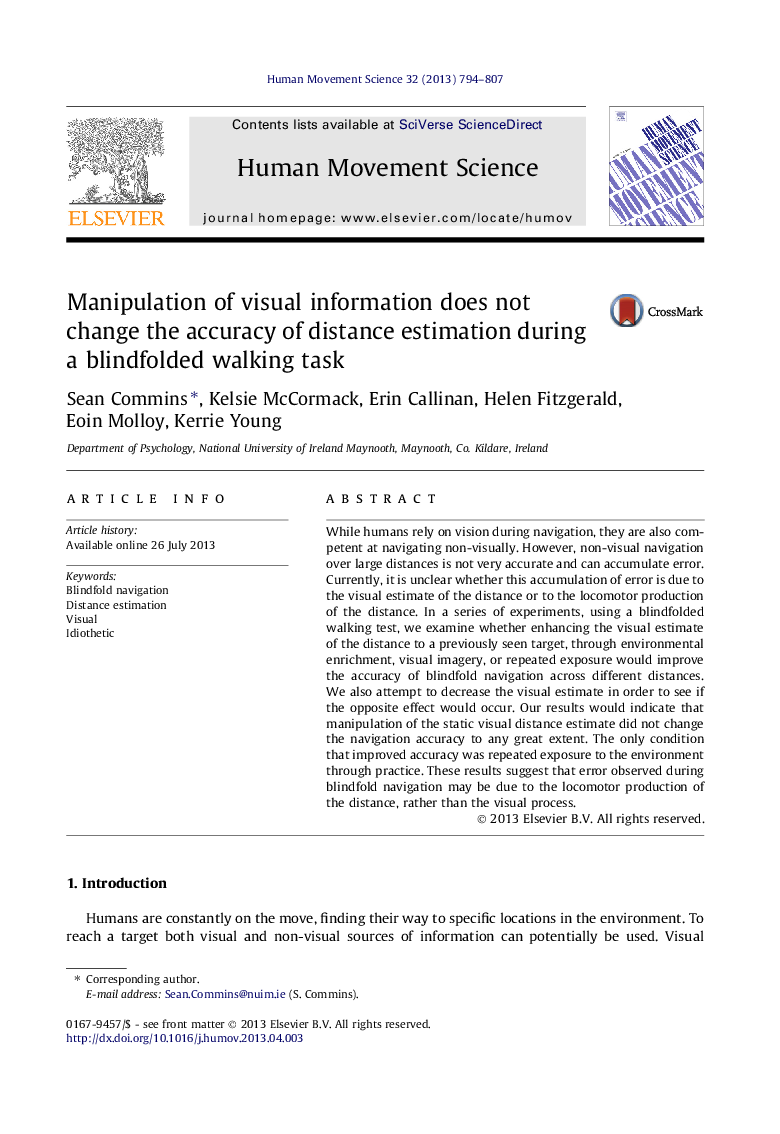| Article ID | Journal | Published Year | Pages | File Type |
|---|---|---|---|---|
| 10459205 | Human Movement Science | 2013 | 14 Pages |
Abstract
While humans rely on vision during navigation, they are also competent at navigating non-visually. However, non-visual navigation over large distances is not very accurate and can accumulate error. Currently, it is unclear whether this accumulation of error is due to the visual estimate of the distance or to the locomotor production of the distance. In a series of experiments, using a blindfolded walking test, we examine whether enhancing the visual estimate of the distance to a previously seen target, through environmental enrichment, visual imagery, or repeated exposure would improve the accuracy of blindfold navigation across different distances. We also attempt to decrease the visual estimate in order to see if the opposite effect would occur. Our results would indicate that manipulation of the static visual distance estimate did not change the navigation accuracy to any great extent. The only condition that improved accuracy was repeated exposure to the environment through practice. These results suggest that error observed during blindfold navigation may be due to the locomotor production of the distance, rather than the visual process.
Keywords
Related Topics
Life Sciences
Neuroscience
Cognitive Neuroscience
Authors
Sean Commins, Kelsie McCormack, Erin Callinan, Helen Fitzgerald, Eoin Molloy, Kerrie Young,
